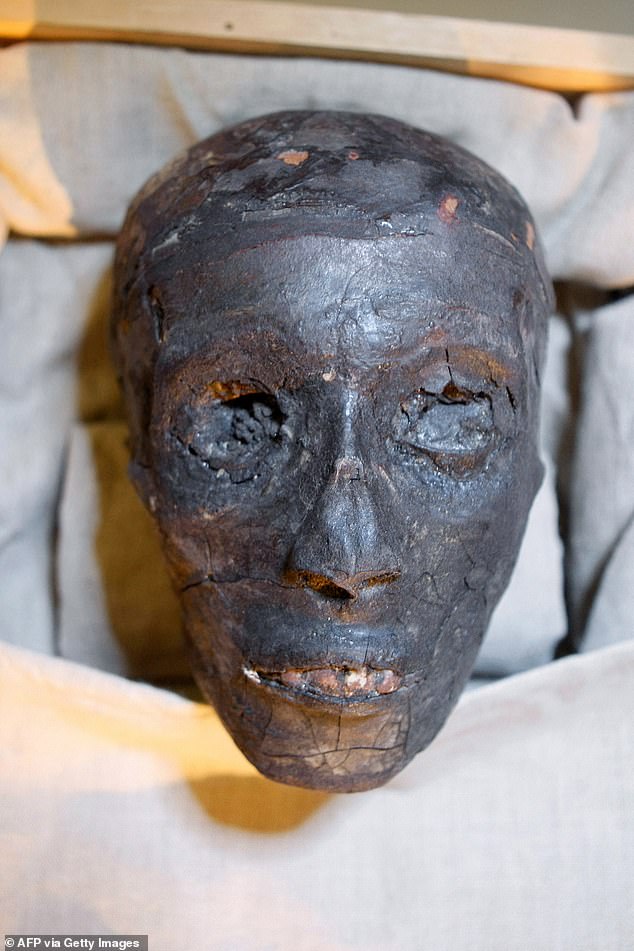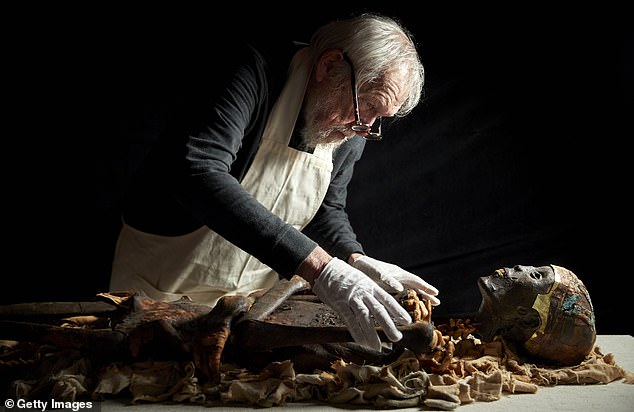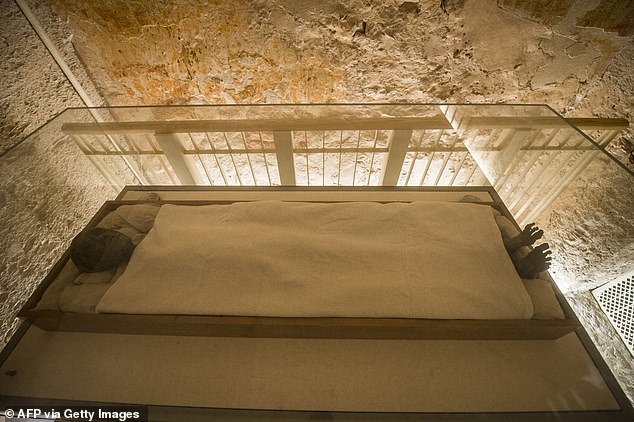It’s been 100 years since King Tutankhamun was unearthed in Egypt, but the disturbing details of what happened to his corpse have left a mark of shame on this archeological triumph.
Records uncovered over the decades have revealed that the ancient Egyptian pharaoh was decapitated and his limbs cut into several pieces after his body was removed from its tomb in November 1925.
British archaeologist Howard Carter and a team of Egyptian excavators discovered the famous tomb in the Valley of the Kings, but found Tut’s body had become stuck to the inside of his coffin over the centuries.
When Carter’s team couldn’t free Tut’s body from the resin it had been covered in during the ancient burial, they used heated knives to slice ‘The Boy King’ out of his final resting place and conduct an autopsy.
However, Tutankhamun’s dismemberment was so gruesome that Carter left out the details from all three volumes of his book series, which documented the historic excavation.
A century later, some researchers, including Eleanor Dobson from the University of Birmingham, have claimed that Carter intentionally covered up the grisly beheading of Tutankhamun to avoid public outrage.
These claims gained even more traction when researchers in the 1960s and 1970s discovered that Tutankhamun’s body had been glued back together after the autopsy to give the appearance of an undisturbed body.
However, scientists have debated for decades whether Carter and the excavators had any other choice in how they removed Tut’s corpse, given the limited resources of the 1920s.

A picture of Pharaoh Tutankhamun’s mummy taken in 2007. The Egyptian king’s head was severed by excavators who unearthed his tomb in 1925

King Tut was decapitated after archaeologist Howard Carter’s team removed his famous golden mask (Pictured) which was buried with the ruler 3,300 years ago
Despite Carter not mentioning the details of Tut’s autopsy in his book series, shocking photographs of the dismemberment were taken and have been preserved by the University of Oxford’s Griffith Institute, so the public can now see the damage for themselves.
Carter’s logs noted the mummy was completely stuck to the bottom of his coffin because the ancient priests had poured huge amounts of thick black oils and resins over the pharaoh 3,300 years earlier, which hardened into a rock-like glue.
For days, they put the gold sarcophagus in the hot Egyptian sun, with temperatures reaching nearly 150 degrees Fahrenheit, and even used lamps in an attempt to melt the black tar-like substance covering Tut.
However, when nothing worked, Carter and anatomists Douglas Derry and Saleh Bey Hamdi decided to use force to take the pharaoh out of the coffin, heating ordinary knives in a flame until they were red-hot to melt through the resin.
They used the knives, chisels, and hammers to literally chip the mummy out of the coffin in pieces, first removing Tut’s famous golden mask and then cutting off his head.
The team would go on to saw Tut’s torso in half and break the arms and legs off at every joint.
In the end, the body was taken apart and dissected into more than a dozen separate pieces so they could recover both the mummy and the priceless gold coffin and jewelry that were stuck in it.
Years later, studies of Tutankhamun’s body revealed that Carter and the anatomists coated each piece with hot paraffin wax to protect it from deterioration and later glued the body back together with resin so it could be displayed.

King Tut’s body was also dismembered, with the limbs sawed and broken apart at each of the joints

Researchers have found that anatomists in the 1920s glued the pieces of King Tut’s body back together after conducting an autopsy
‘It is worth reconsidering the legacy of Carter’s excavation, not just as a landmark in Egyptology, but as a moment of ethical reckoning,’ Dobson said in The Conversation.
‘The mutilation of Tutankhamun’s body, obscured in official narratives, invites us to challenge narratives of archaeological triumph and to look back on the past with a more critical view.’
While Carter’s methods, which disassembled one of the most Egyptian figures in history, have drawn criticism from some researchers, others have defended his excavation.
In 2022, Egyptologist, historian, and author Aidan Dodson said he would have taken the same steps to free Tutankhamun after finding his tomb.
‘I would have done everything Carter did that day—he was way ahead of his time as a field archaeologist, and I don’t think anyone else alive at the time would have been as successful in carrying out the clearance,’ Dodson told the American University in Cairo Press.
